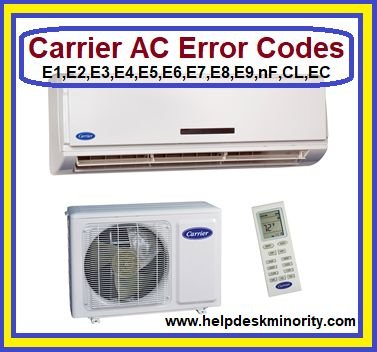
Imagine your air conditioner as a car. You wouldn’t ignore the ‘check engine’ light and hope your car keeps running perfectly, would you? The E3 error code is like that blinking light on your dashboard hinting that something isn’t quite right. Ignoring it is a bit like pretending a small leak in your boat won’t eventually sink you. It doesn’t mean your air conditioner will stop working immediately, but it’s a clear sign that something inside the unit needs attention.
What Does the E3 Error Code Mean?
The E3 error code in Honeywell air conditioners generally signifies an issue related to the unit’s evaporator temperature sensor. Think of the evaporator as the heart of your AC system—it’s the part that absorbs heat from the air in your room. When the sensor that monitors its temperature malfunctions, it can disrupt the cooling process, much like trying to bake a cake without knowing the oven temperature. This sensor is crucial for ensuring your room stays at the temperature you set on the thermostat.
So, why does this error code pop up? Several reasons could be at play. It might be due to a faulty sensor, which is like having a thermometer that doesn’t give accurate readings anymore. Other times, the problem could be loose connections or even a result of accumulated dirt or debris that interfere with the sensor’s ability to function properly. In rare cases, it might indicate more complex issues within the air conditioner’s internal system, such as problems with the circuit board. Understanding these nuances can help you decide on the right course of action.
Ignoring this error is akin to ignoring a crack in the foundation of your house. It might not seem like a big deal at first, but over time, it could lead to larger problems that are costlier to fix. So, what should you do when confronted with the E3 error code? The first step is to identify the root cause of the problem. Often, it may be a simple fix, like checking the connections or cleaning the sensors. However, if the issue persists, it might require professional intervention.
How to Address the E3 Error Code
Let’s talk about ways to tackle the E3 error code. First things first: resetting the air conditioner might be a good starting point. It’s similar to rebooting your computer when it acts up. To do this, turn off and unplug the unit, wait a few minutes, and then plug it back in. This process can sometimes clear minor glitches causing the error to display.
If resetting the unit doesn’t work, you may need to roll up your sleeves a bit more. Next, it’s essential to inspect the sensor for dirt or debris. Imagine trying to see through a dusty window—cleaning it often clears up the view. Similarly, gently cleaning the sensor can sometimes resolve the problem. If you’re unsure about how to access and clean the sensor, consulting the user manual can be incredibly helpful.
However, if these steps don’t seem to fix the issue, it’s time to call in the experts. Contacting a professional technician can save you from future headaches. These professionals can diagnose and fix more complex problems that might not be immediately visible. Think of it like going to a doctor when at-home remedies fail—sometimes, you just need a specialist.
Prevention Tips to Avoid Future Errors
Now, let’s focus on keeping your air conditioner running smoothly in the future. Like maintaining a car for optimal performance, regular maintenance is key for your AC unit. Cleaning or replacing filters regularly is one of the simplest ways to help prevent error codes from appearing. Filters that are clogged with dust and debris can lead to more stress on the system, which, in turn, might trigger various errors, including E3.
Another proactive measure is to schedule routine check-ups with an HVAC professional. They can identify potential issues before they become serious problems. Think of it as getting your car serviced regularly to avoid breakdowns. These routine inspections can help keep your air conditioner in top shape, ensuring it runs efficiently and effectively without interruptions.
Finally, consider investing in a dehumidifier if you live in a particularly humid area. High humidity can affect your air conditioner’s performance, so keeping indoor humidity in check could reduce the likelihood of error codes appearing. By taking these preventative steps, you can ensure your air conditioner remains your trusty companion against the heat, without pesky disruptions.
In conclusion, while it might be tempting to ignore the E3 error code on your Honeywell air conditioner, addressing it promptly can prevent bigger issues down the road. By understanding what this error code means and knowing how to respond, you can keep your air conditioner running smoothly and your home comfortable all season long.